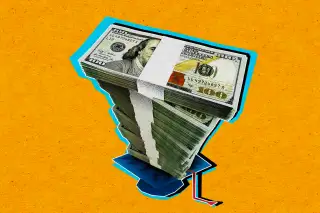Student Loan Payments Are Resuming Soon — Here’s How Much Borrowers Can Expect to Pay

The end of the student loan payment pause is near — and while new analysis finds that borrowers will undoubtedly struggle to readjust to monthly payments, the transition could be more manageable than many of them expect.
New studies from credit reporting agency TransUnion and financial services company Wells Fargo show that the majority of federal student loan borrowers will owe less than $400 a month when payments resume in the fall. Despite the initial challenge that the reincorporation of monthly payments will pose — particularly in combination with new debts and inflation — researchers say it's unlikely to have an outsize financial impact on most U.S. households with student debt.
Starting Sept. 1, interest on federal student loans will begin accruing again for the first time since the onset of forbearance in March 2020. The first payments will be due in October, with the Department of Education instituting a 12-month grace period for the reporting of missed payments.
There’s no doubt that student debt is a massive burden — it's the second largest consumer debt after mortgages, and the average borrower spends 16 to 19 years paying off their loans. In the time since the COVID-19 forbearance started, inflation and the Federal Reserve's subsequent interest rate hikes have slammed Americans across income tiers. According to the TransUnion study, 53% borrowers facing repayment have also accumulated new credit card debt. Roughly a third (36%) have taken out new auto loans, which have reached record-breaking highs over the past few years.
As a result, TransUnion says that even with ongoing efforts to forgive or alleviate student debt, most borrowers will experience a “payment shock” as they transition to repayment. Wells Fargo also predicts that “the struggle will be real and unfamiliar” for these borrowers, and it will likely slow U.S. spending growth just as inflation is getting closer to the Fed’s 2% goal.
But the numbers simply don’t align with the catastrophic borrower expectations recorded by Morning Consult in June. In fact, economists at Wells Fargo say that only about 7% of borrowers (about 3 million people) owe $100,000 or more in federal student loans. More than half of all borrowers have comparatively manageable balances of $20,000 or less, and the annual sum of the average monthly payment will total about 4% to 5% of the annual median U.S. salary of roughly $70,000.
“Despite student loan debt having grown disproportionately compared to other categories of household debt in recent years, the majority of households with outstanding student loans do not owe enormous amounts on them,” the Wells Fargo economists write in the study.
The Wells Fargo study predicts a small pullback in spending among some households, but overall, returning to student loan repayment probably won’t break the bank for the average borrower.
Policies to help student loan borrowers
Alongside the government's 12-month grace period for missed payments, Department of Education officials have also said borrowers will be able to sign up for a new, more generous repayment plan in the coming weeks. The plan ties payments to borrowers incomes and is expected to save the average borrower $1,000 a year.
Following the defeat of President Joe Biden’s student debt relief package in the U.S. Supreme Court, the administration said it would pursue a new path toward offering borrowers debt relief. The particulars of the new forgiveness program are still in development, but other pathways to debt relief — like more the more affordable income-driven repayment plan and revisions to the Public Service Loan Forgiveness program — have already been made available to student loan borrowers in anticipation of repayment. Last Friday, the department also announced that it would begin canceling $39 billion in loan debt for more than 800,000 borrowers who have been making payments for over 20 years will see their remaining balances erased.
Parent PLUS Loans: A Guide to Helping Your Student Pay for College
Rejection Rates for Credit Cards, Auto Loans and More Hit Historically High Levels